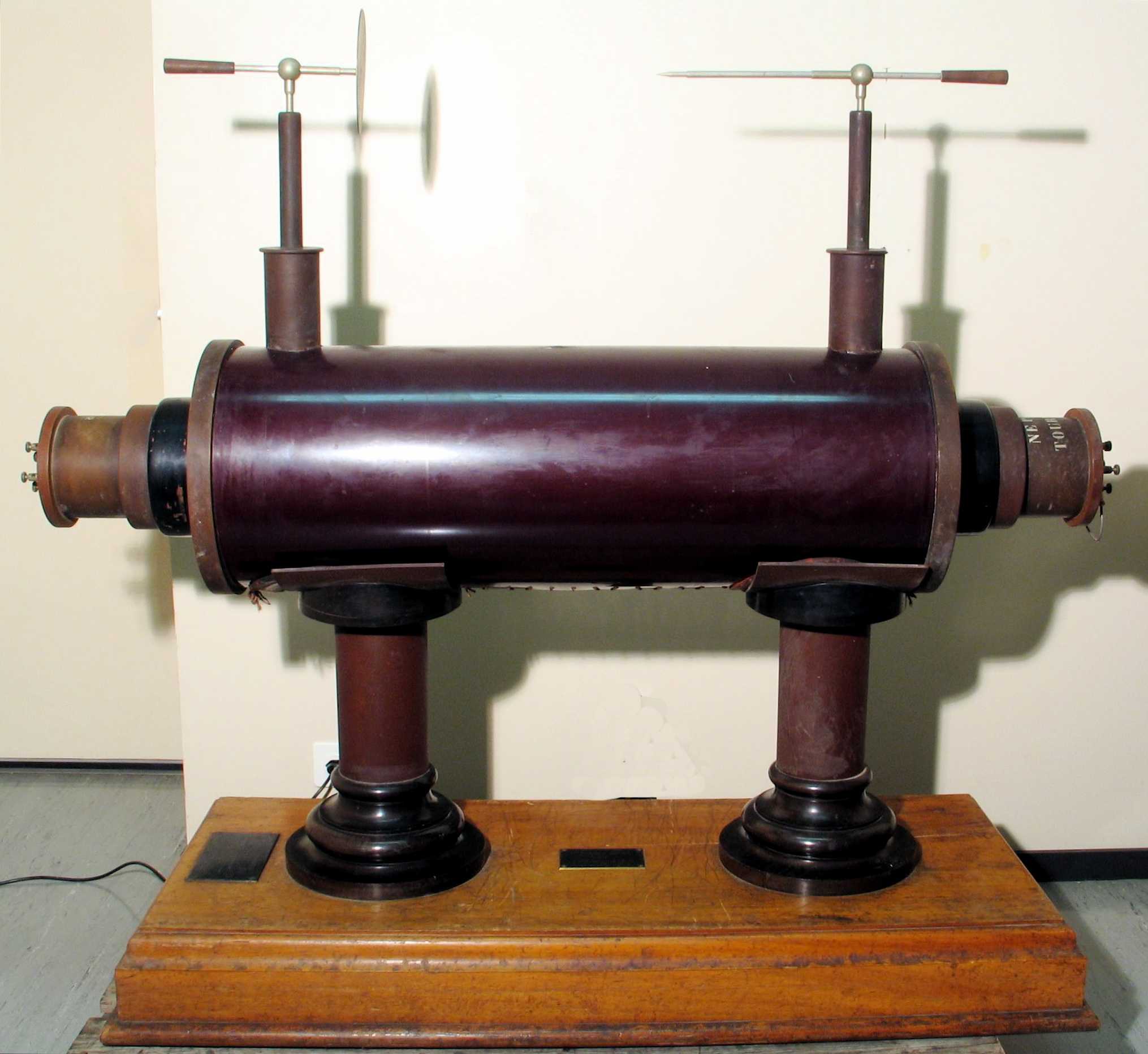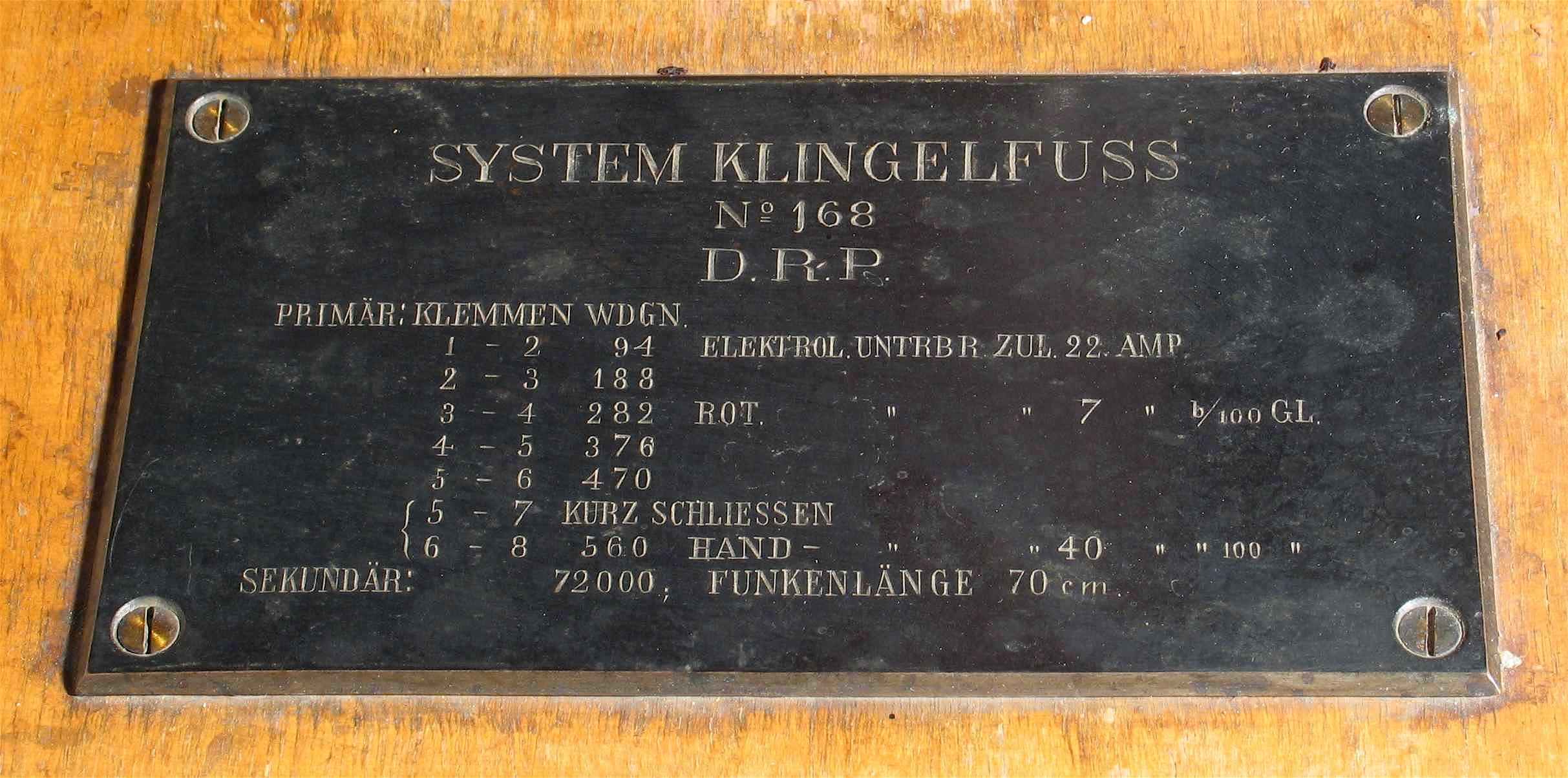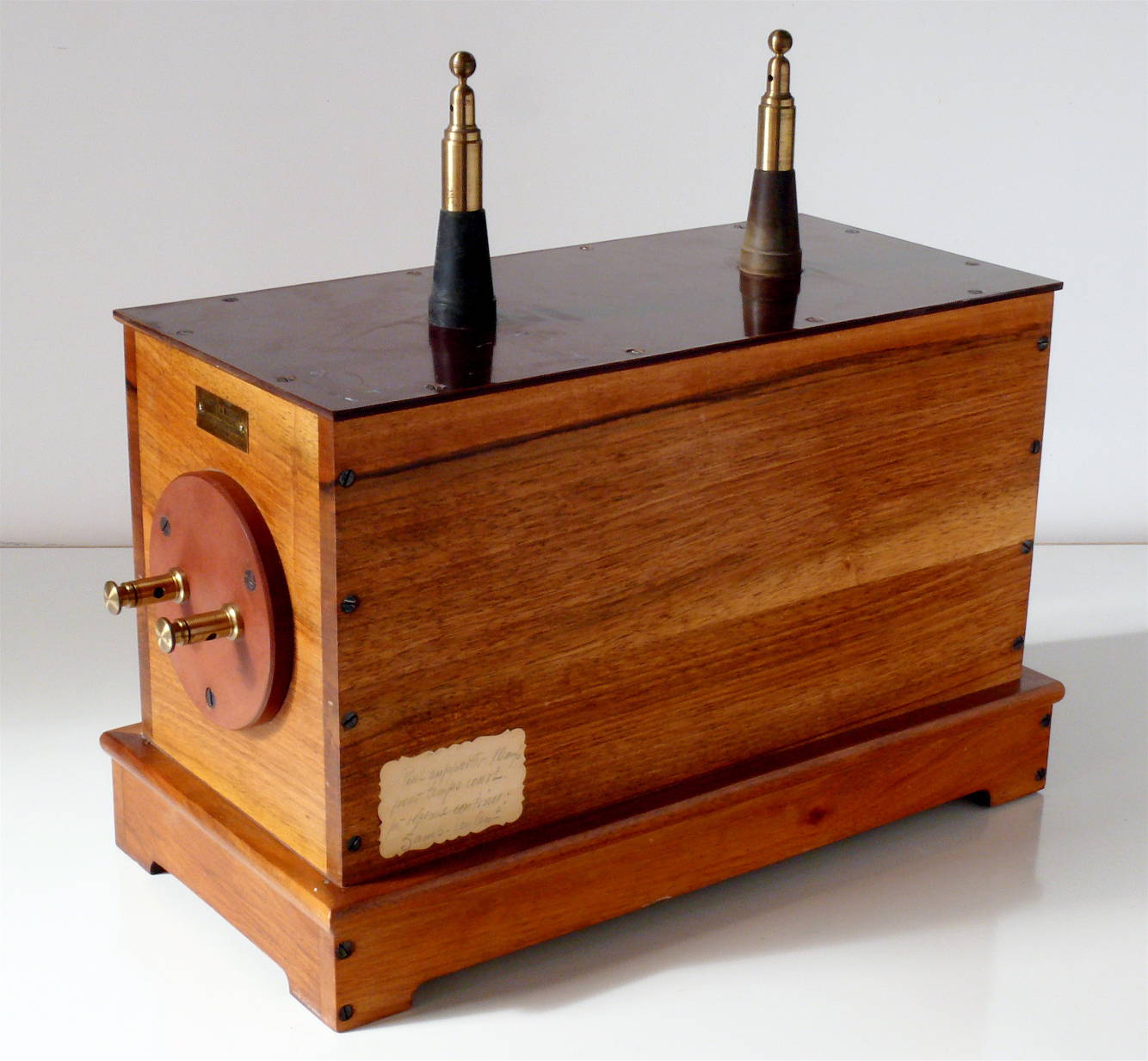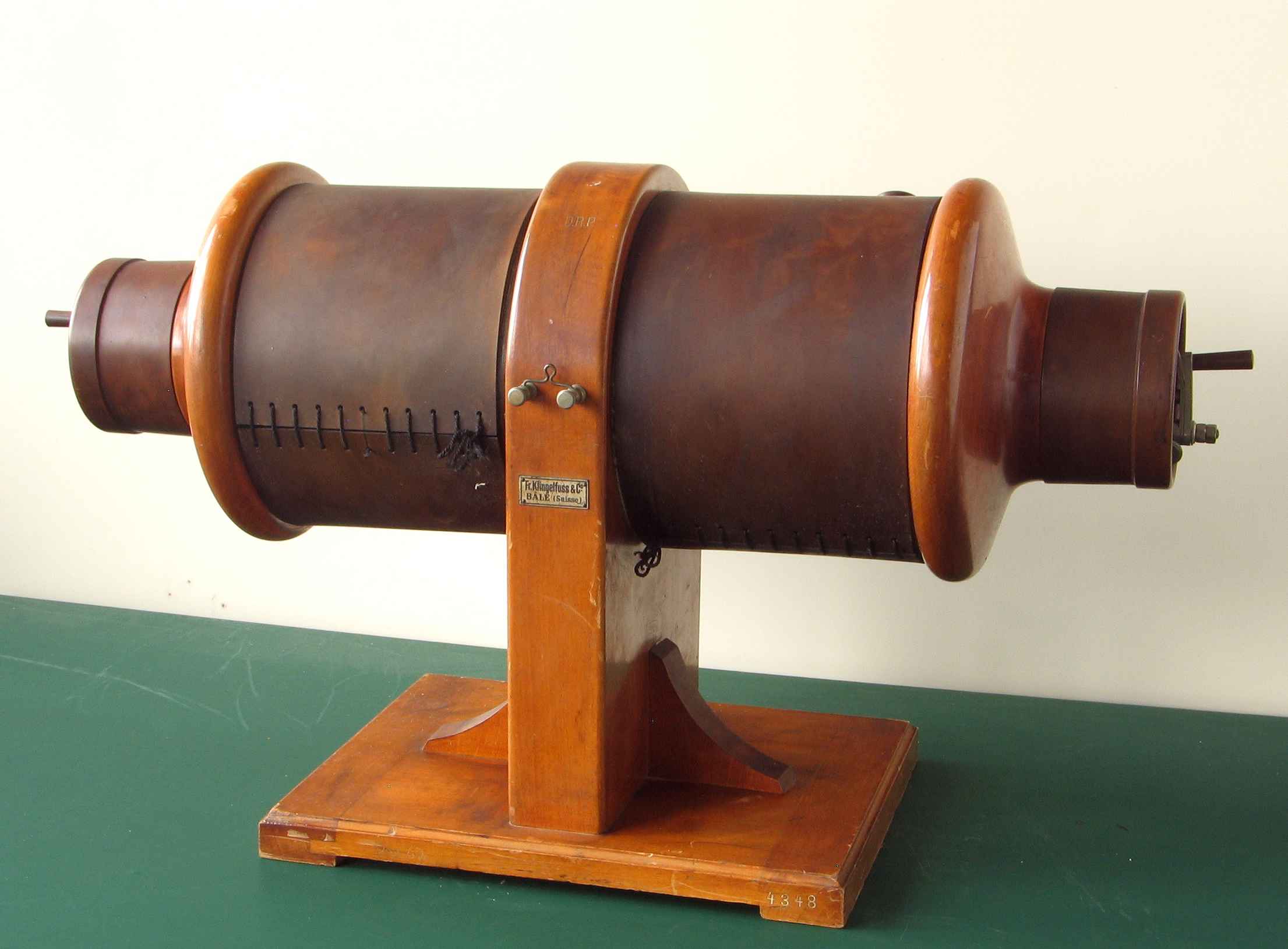Grande bobine d’induction (dite de Ruhmkorff)
N° d'inventaire 603.0199
Catégorie Electro-magnétisme et induction
Vitrine BSP04
Constructeur Klingelfuss, Bâle
Pays CH
Datation 1900 - 1903 (1903)
Dimensions 1500 x 570 x 1330 mm3
Grande bobine d’induction, dite de Ruhmkorff, pouvant produire des étincelles de 70 cm.
Le socle en bois porte une plaque:
Laboratoire de physique
“Don de M. J.-J. Mercier de Molin en 1903”
Usage principal Démonstrations
Etat de conservation En état de fonctionnement
-
Informations supplémentaires
InscriptionsSystem Klingelfuss
No 168
D.R. PatentRemarques et commentairesLa notice manuscrite de 1925 donne la description des enroulements et le mode d’emploi de la bobine, en alternatif (50 Hz) ou en continu, avec un interrupteur électrolytique aujourd’hui disparu, remplacé par la suite par une spirale de Roget.
Pour la biographie de Friedrich KLINGELFUSS, voir la fiche 603.628.
Pour d’autres références, voir Inv. 603.760.
Constructeur mentionné par H. ARMAGNAT : La bobine d'induction (Paris : Gauthier-Villars 1905), par Dr. L. GRAETZ: Die Elektrizität und ihre Anwendungen, 16. A. (Stuttgart: J. Engelhorn Nachf. 1912), S. 234 et par S. VALENTINER (Handbuch der Physik XVI/4, 1927).
Le donateur Jean-Jacques Mercier de Molin (1859 -1932), 4ème du nom, fait partie de la dynastie d’industriels lausannois. Il fit notamment bâtir le “Château Mercier” de Sierre.
Pour un historique des bobines d’induction, cf. Shiers (1971), Mollan (1994) et, pour les plus grandes, Brenni (2015), avec en couverture une photo de la bobine de Lausanne.
La bobine d’induction aurait été inventée en 1836 par un prêtre irlandais, Nicholas Callan (1799-1864), professeur au St Patrick’s College at Maynooth, County Kildare, Irlande (Mollan and Upton 1994). Callan ne commercialisa pas sa découverte. Ruhmkorff, à Paris, construisit sa première bobine en 1853, et les produisit et vendit ensuite en grande quantité, si bien que, dans les pays francophones en tout cas, son nom resta attaché à ce dispositif.
Bibliographie
— Notice manuscrite et dactylographiée de C. Borle (3 p., 1925)
Brevets suisses :
— No 21147 du 16 nov. 1899 accordé à Fr. Klingelfuss, Bâle
(Spule für Hochgespannte Ströme)
— No 42949 du 23. nov. 1907 accordé à Fr. Klingelfuss, Bâle
(Einrichtung an einem Induktorium zu Meßzwecken)
— No 109381 du 16 mars 1925, accordé au Dr. Fr. Klingelfuss, Bâle
(Verfahren zum Eichen einer Meßspule zur Bestimmung der Scheitelspannung auf der Hochspannungseite von Induktionsapparaten)
— U.K. patent No 11299, accepted 25th May 1909, granted to Friedrich Klingelfuss, of 7, Petersgasse, Basle, Switzerland
(Improvements in or relating to the Measurement of Intensity and Tension of Electric Currents Delivered by an Induction Coil)
Articles de Klingelfuss dans des revues scientifiques :
— Fr. Klingelfuss: Untersuchungen an Induktorien an Hand der Bestimmungsstücke derselben
Elektrotechnische Zeitschrift 40 (1901) 830 und Ann. der Physik 5 (1901) 837-887
— Fr. Klingelfuss: Untersuchungen an Induktorien an Hand der Funkenentladungen bis zu 100 cm Funkenlänge in Luft von Atmosphärendruck
Ann. der Physik 5 (1902) 1198-1216
Autres articles :
— G. SHIERS: The Induction Coil; Sci. Am. 224 (May 1971) 80-87
— Ch. MOLLAN, J. UPTON: Maynooth College – The Scientific Apparatus of Nicholas Callan and other Historic Instruments
(St Patrick's College Maynooth and Samton Ltd 1994)
— P. BRENNI: Very Large Induction Coils
Bulletin of the Scientific Instrument Society 125 (June 2015) cover & 2-13






